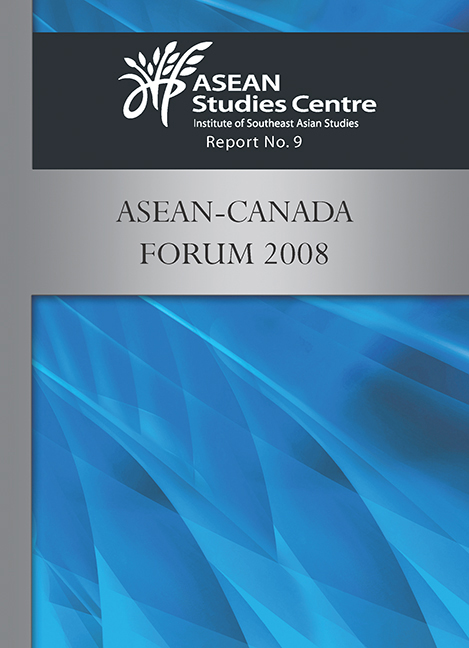Book contents
- Frontmatter
- Dedication
- Contents
- Introduction
- I Regional Economic Integration: ASEAN and Canadian Perspectives
- II Background Papers
- 1 AFTA–NAFTA: Trade and Investment Issues
- 2 Trade and Investment Issues in ASEAN Economic Integration
- 3 Institutional Development in ASEAN
- 4 Governance Issues in NAFTA
- 5 Different Approaches to Dispute Resolution under ASEAN
- 6 Dispute Resolution under NAFTA: Evolution and Stagnation
- 7 Winners and Losers in ASEAN Economic Integration: A Perspective from Vietnam
- 8 Winners and Losers in International Economic Integration: The Distributional Effects of NAFTA
- 9 Cross-border Labour Migration in ASEAN: Issues and Challenges
- 10 Labour Market Integration within NAFTA
- Annex I: Programme of the Forum
- Annex II: List of Participants
- Annex III: Rules-based Governance
7 - Winners and Losers in ASEAN Economic Integration: A Perspective from Vietnam
from II - Background Papers
Published online by Cambridge University Press: 21 October 2015
- Frontmatter
- Dedication
- Contents
- Introduction
- I Regional Economic Integration: ASEAN and Canadian Perspectives
- II Background Papers
- 1 AFTA–NAFTA: Trade and Investment Issues
- 2 Trade and Investment Issues in ASEAN Economic Integration
- 3 Institutional Development in ASEAN
- 4 Governance Issues in NAFTA
- 5 Different Approaches to Dispute Resolution under ASEAN
- 6 Dispute Resolution under NAFTA: Evolution and Stagnation
- 7 Winners and Losers in ASEAN Economic Integration: A Perspective from Vietnam
- 8 Winners and Losers in International Economic Integration: The Distributional Effects of NAFTA
- 9 Cross-border Labour Migration in ASEAN: Issues and Challenges
- 10 Labour Market Integration within NAFTA
- Annex I: Programme of the Forum
- Annex II: List of Participants
- Annex III: Rules-based Governance
Summary
International economic integration has been a profound trend over the past couple of decades. The process took place in almost all parts of the world, with participation from almost all economically active countries and territories with expectations resting on both theoretical and empirical evidence of its benefits. These benefits are, however, largely in net terms. Various benefits of economic integration process are widely acknowledged, such as more efficient allocation of resources, competition-induced efficiency improvement and technological progress, domestic institutional and economic reforms, etc. Yet these benefits come together with challenges and/or costs in several aspects, from promoting sustainable economic growth to reduction of poverty and income gap, for each participating country.
At the regional level, international economic integration might also widen the development gap across participating countries and territories since they have different capacity to effectively grasp the opportunities and mitigate the risks brought about by economic integration, even if their commitments are uniform. For the region of Southeast Asia, widening development gap is among the major risks in economic integration, as the regional countries are vastly heterogeneous in terms of economic development level,culture, social progress, and political system.
This paper discusses the benefits and costs of ASEAN economic integration from the perspective of Vietnam — a member of the Association of Southeast Asian Nations (ASEAN). The paper is structured as follows. Section 1 briefly compares the common theoretical understanding with actual empirical observations of the impact of economic integration. Section 2 then contends that the development gap across ASEAN member countries can be narrowed through economic integration, and makes policy recommendations as to how this can be realized. Section 3 subsequently summarizes the lessons from Vietnam's experience in poverty reduction.
- Type
- Chapter
- Information
- ASEAN-Canada Forum 2008 , pp. 142 - 157Publisher: ISEAS–Yusof Ishak InstitutePrint publication year: 2010

